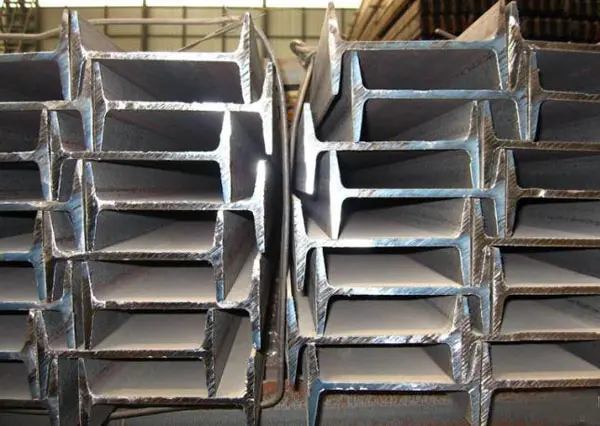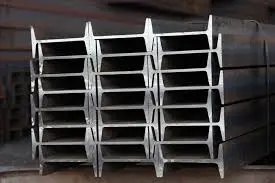What is an I-beam?
I-beams, also known as Steel Beams, are long strips of steel with an I-shaped cross section.


I-Beams are divided into three types: ordinary I-beams, light I-beams, and H-beams. I-beams are widely used in various building structures, bridges, vehicles, brackets, machinery, etc. The flanges of ordinary I-beams and light I-beams gradually become thinner from the root to the edge, with a certain angle. The models of ordinary I-beams and light I-beams are represented by Arabic numerals of their waist height in centimeters. The web, flange thickness and flange width are different. The specifications are expressed in millimeters of waist height (h) × leg width (b) × waist thickness (d).
The specifications of ordinary I-beams can also be expressed by model numbers, which indicate the waist height in centimeters.
Ordinary I-beams and light I-beams have relatively high and narrow cross-sectional dimensions, so the moment of inertia of the two main sleeves of the cross-section is quite different. Therefore, they can generally only be used directly for members that are bent in the web plane or to form lattice-type load-bearing members. They are not suitable for axially compressed members or members that are bent perpendicular to the web plane, which greatly limits their application range. The use of I-beams should be selected according to the requirements of the design drawings.
I-beams are mainly used in various building structures, vehicles, bridge supports, machinery, etc.
Product features of I-beams:
1. Excellent tensile and compressive strength. I-beams are processed by high-temperature hot rolling and cold forming in the production process. They have extremely high tensile and compressive strengths and can withstand large external forces and weights.
2. Light weight and high strength. Compared with steel components made of other materials, I-beams are lighter in weight, but have higher tensile and compressive strengths. They are not easily deformed or broken after long-term use.
3. Convenient construction and installation. I-beams have uniform dimensions, are not easily deformed, and have high processing accuracy. They can be easily installed by crane or hoist to improve the progress of the project.
Uses of I-beams:
I-beams are widely used in various building structures, bridge engineering, machinery manufacturing and other fields. The following are the main uses of I-beams:
1. Building structures: I-beams are mainly used in industrial plants, bridges, transportation equipment, steel structure platforms, support structures, etc.
2. Manufacturing: I-beams are used to manufacture cranes, conveyors, excavators, forklifts and other machinery manufacturing fields.
3. Other fields: It can also be used to manufacture water conservancy equipment, mining support, metallurgical equipment, etc.
I-beam is a commonly used building material, mainly used to support and reinforce building structures. According to different sizes and materials, I-beams can be divided into many different categories.
1. Classification by material:
The main materials of I-beams are ordinary carbon steel, alloy structural steel and high-quality carbon structural steel. Depending on the material, the bearing capacity and service life of I-beams will also be different.
2. Classification by size:
The size of I-beams is generally divided into two types: equilateral I-beams and unequal I-beams. The upper and lower flanges and webs of equilateral I-beams have the same width, while the upper and lower flanges and webs of unequal I-beams have different widths.
3. Classification by shape:
The shapes of I-beams include right-angle I-beams, waist-shaped I-beams, beveled I-beams, etc. I-beams of different shapes are suitable for different building structures and use environments.
4. Classification by surface treatment:
The surface of I-beams can be treated to be galvanized I-beams, spray-coated I-beams, etc. Galvanized I-beams have good anti-corrosion properties and can extend their service life.
5. Classification by use:
I-beams can also be classified according to their uses, such as bridge I-beams used in bridge construction, building I-beams used in building supports, etc.
In general, the classification of I-beams mainly depends on their material, size, shape, surface treatment and use. In practical applications, choosing the right I-beam classification can better meet the needs of building structures and ensure the safety and stability of buildings.
Email:manager@fsdsteel.com
Phone/Whatsapp:+86-18831507725















